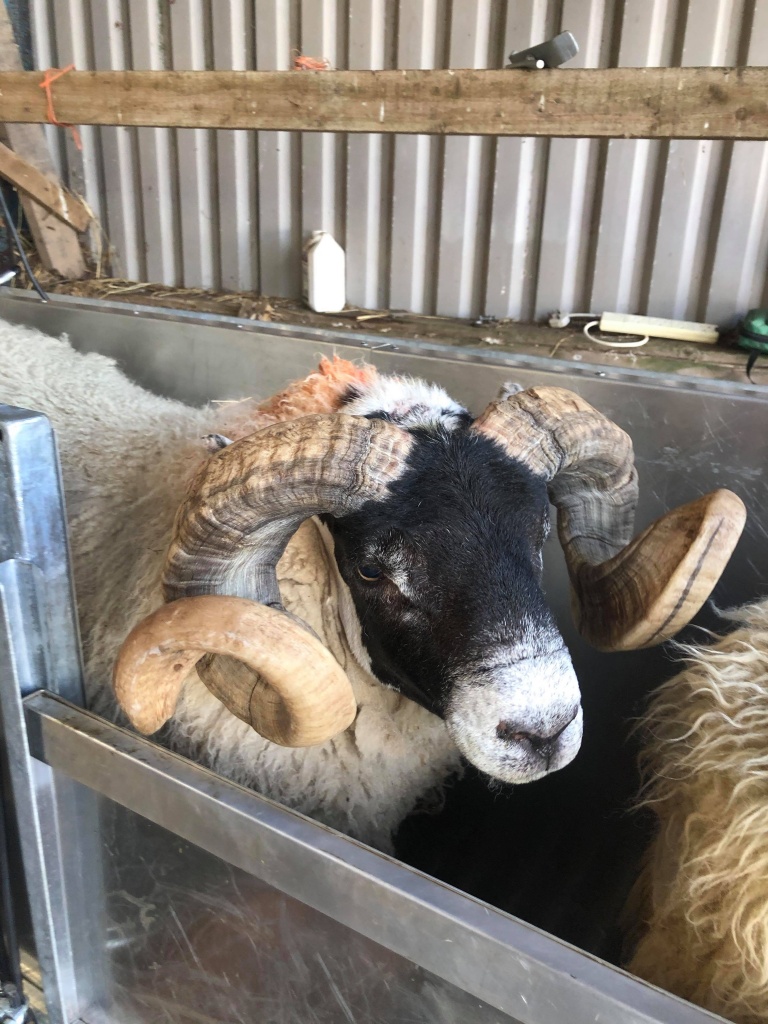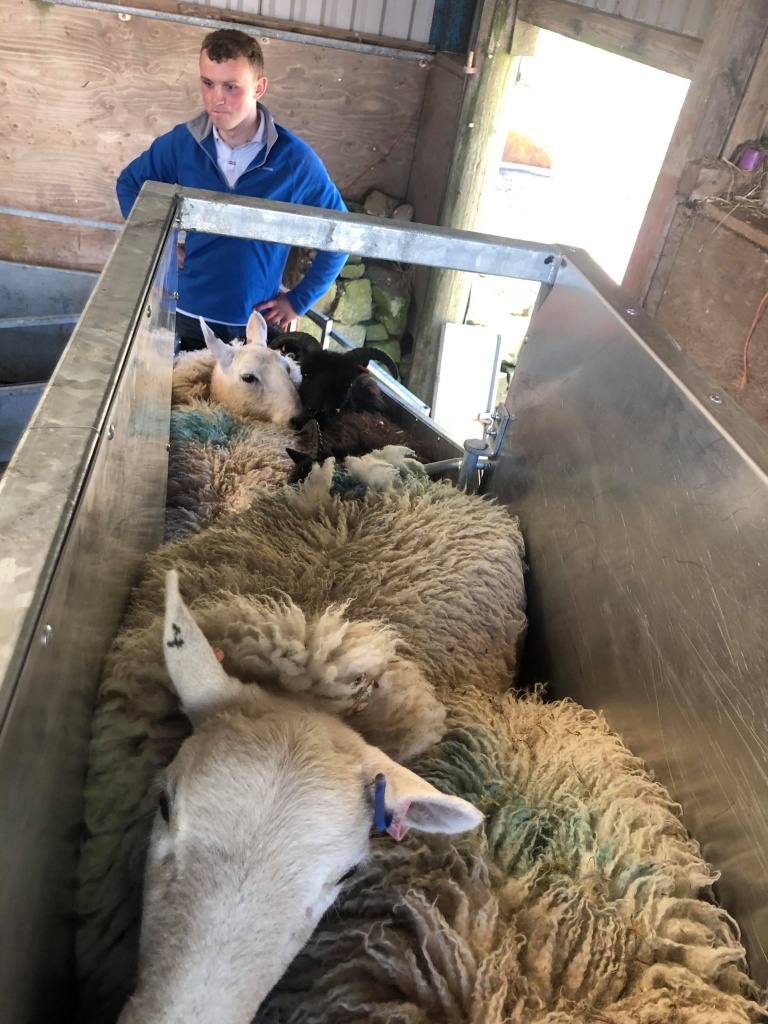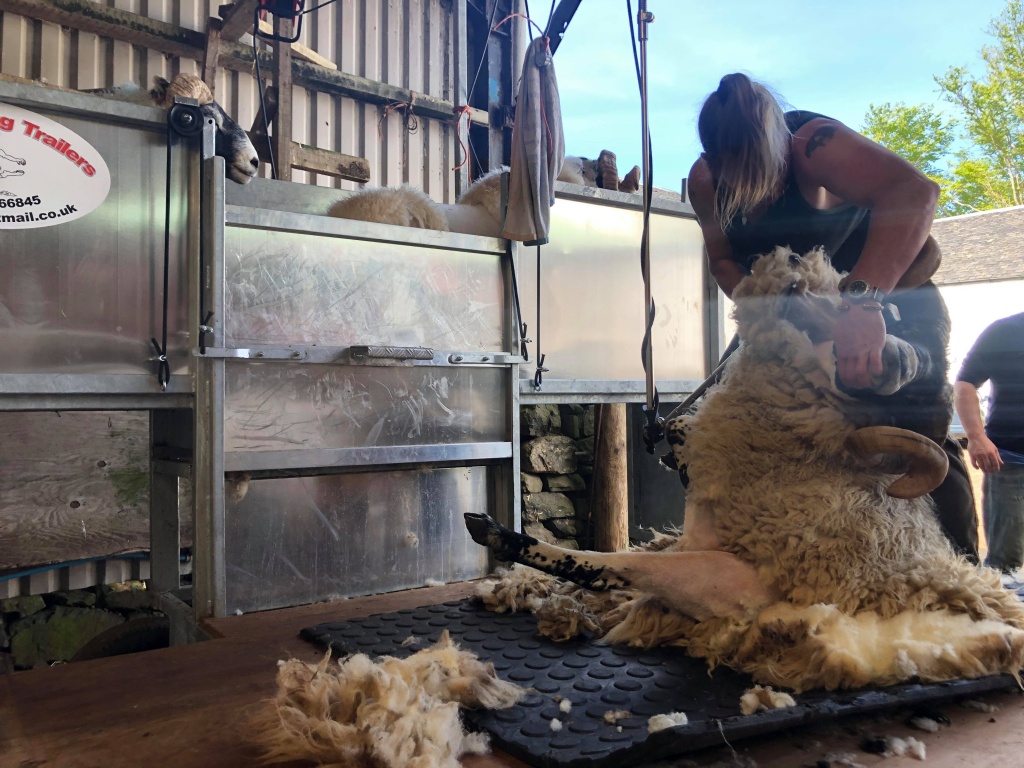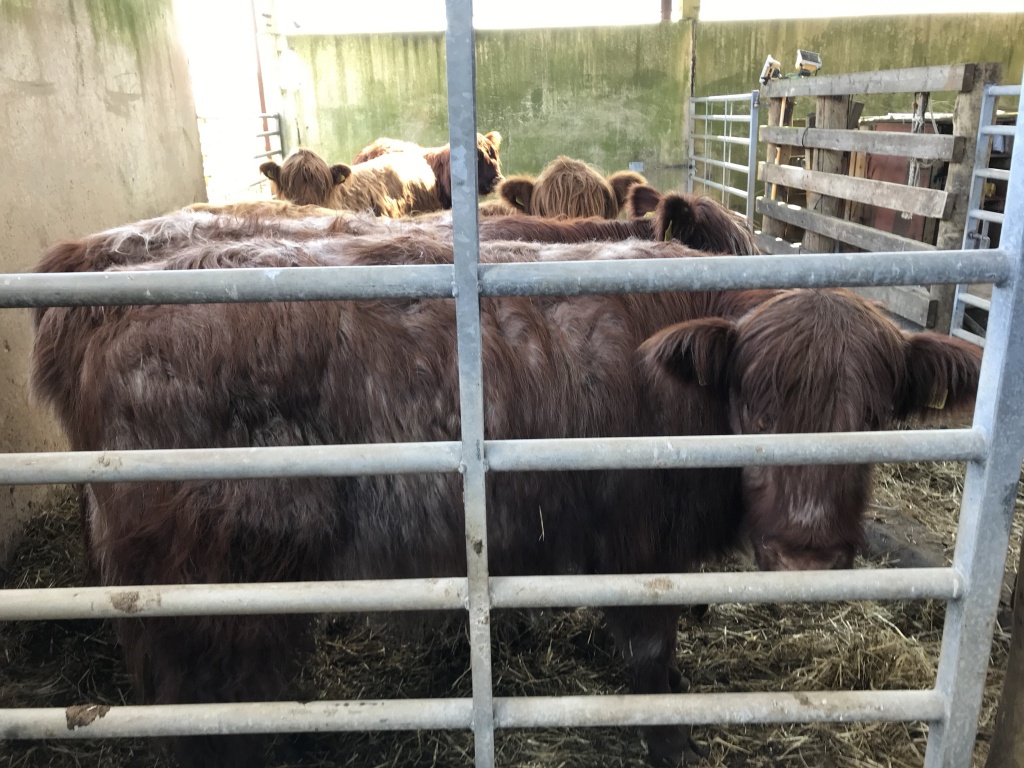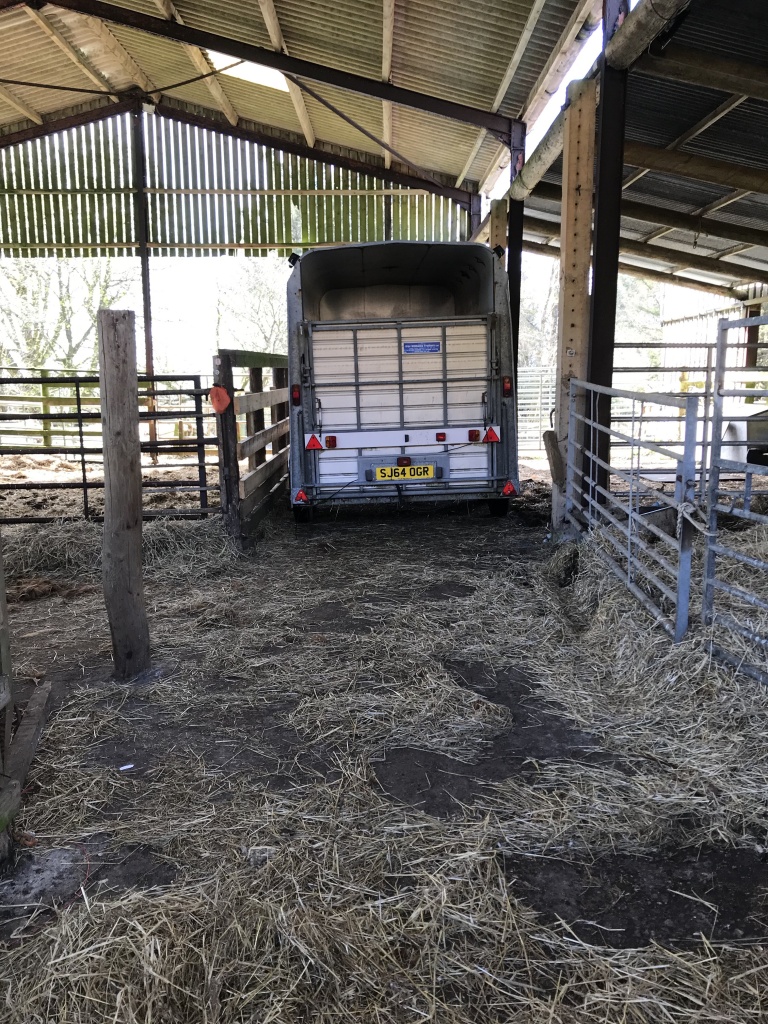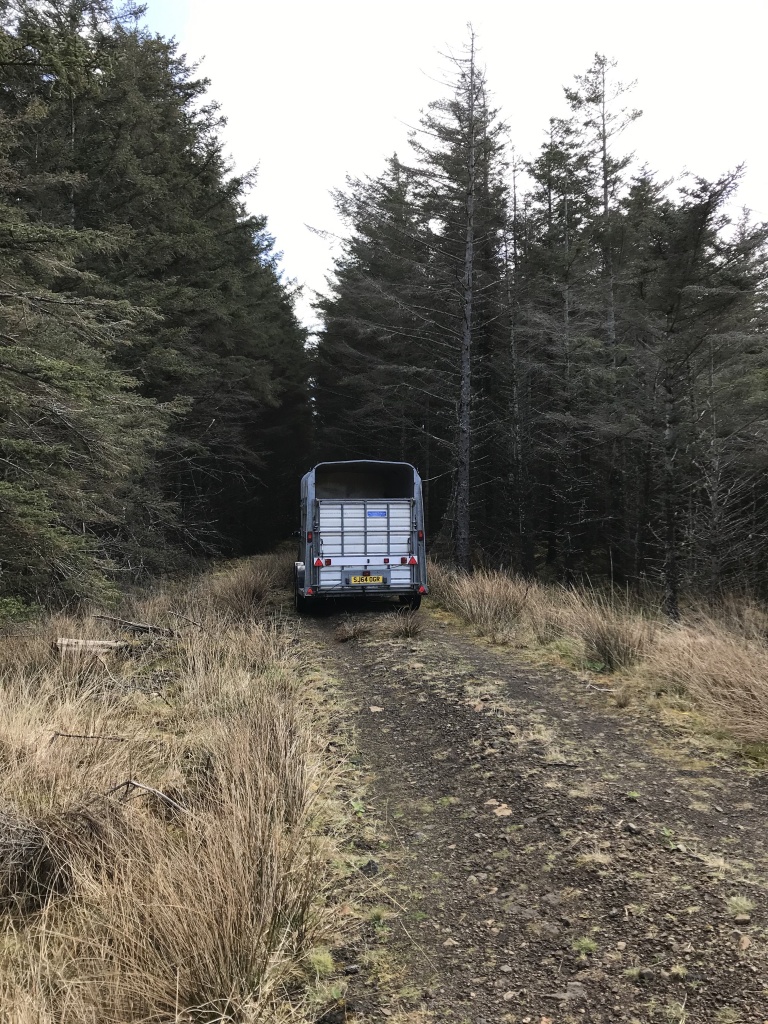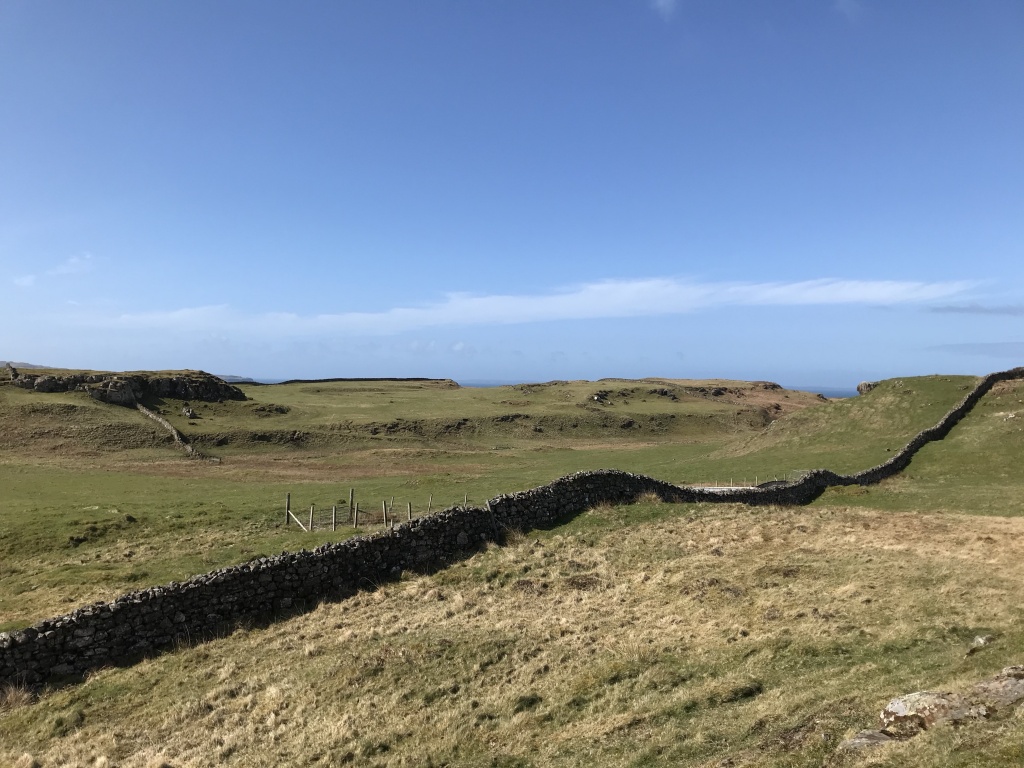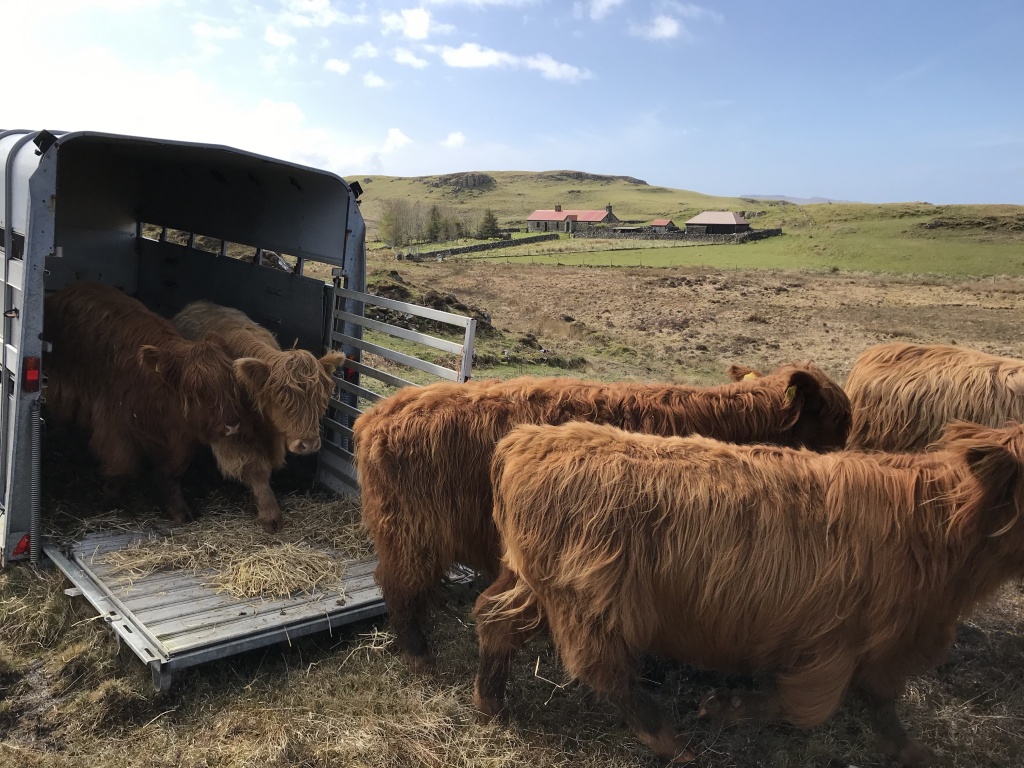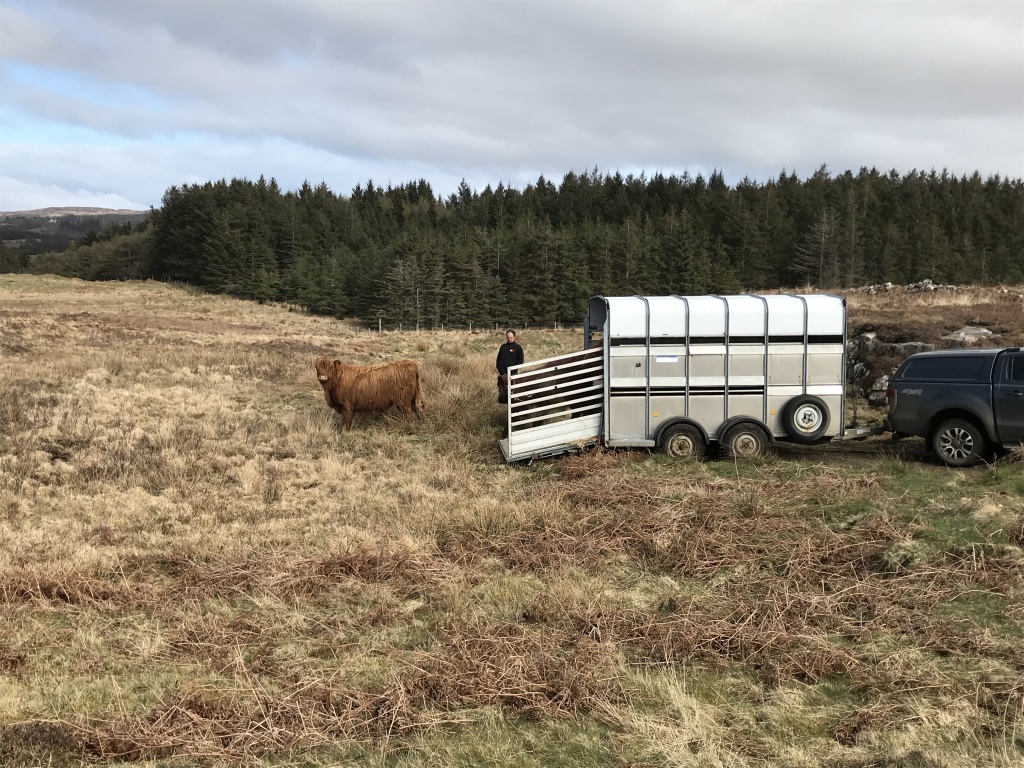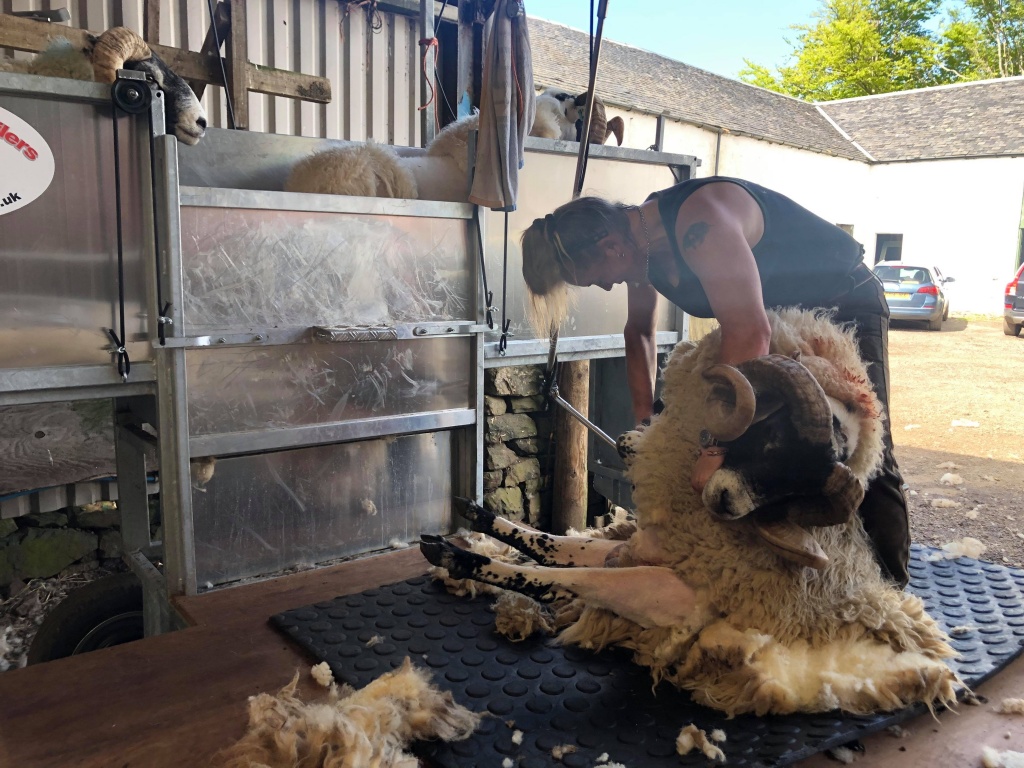
This week at Glengorm saw our hogs and tups getting sheared. They get clipped at this time of year, as their wool is ready for it. They are in better condition than the ewes that have had lambs, and they have an earlier rise in their wool which makes clipping easy. The rise in wool is when it thins out and can pull away from the body of the animal easier to get the clippers in.
Rhoda Munro comes and does ours, and Brough John along this time too. She comes armed with her clipping trailer which makes the job easier. The sheep are fed though the race and line up waiting to get taken out by the shearer and then let loose. The wool then gets passed on to the roller to rob the fleece and pack away in the big wool bags.
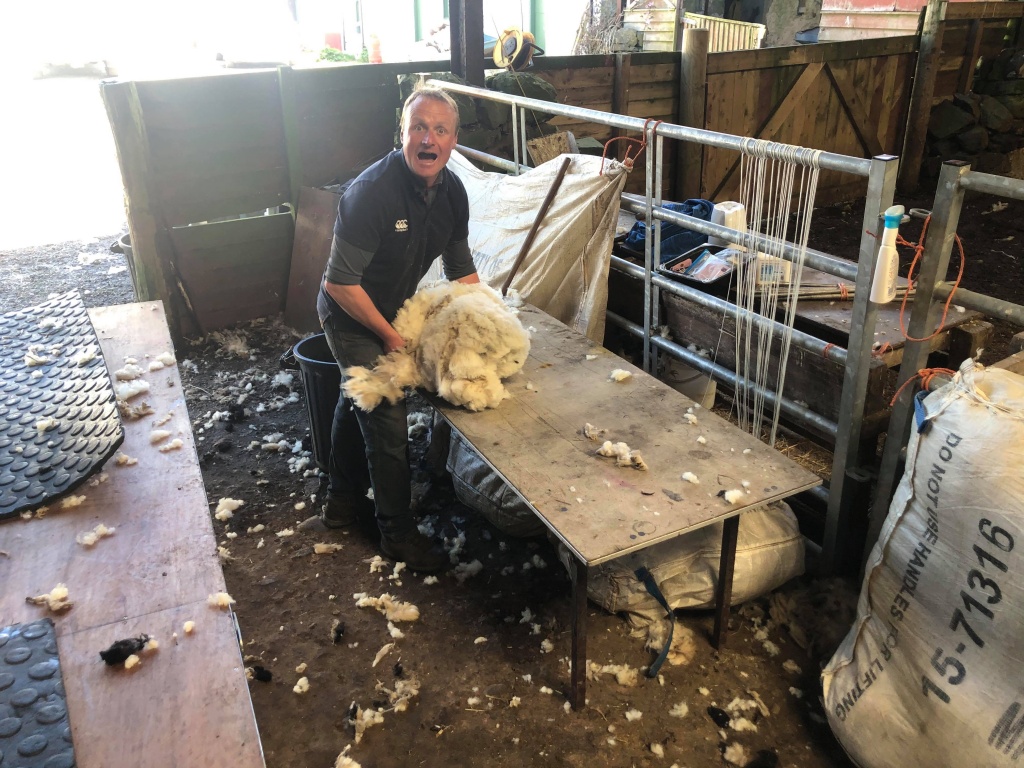
Shearers are paid per sheep they shear, so this process tends to be quite fast. The wool is taken and sold to the wool board and is usually turned into wool products. However this year, there is a 7.3 million tonne surplus of wool so the market has disappeared and unfortunately the wool may end up being burnt this year as it will cost island farms to take it to the mainland to give it away.
About 250 sheep got sheared, mainly blackies, and 14 tups. Of the hogs that got sheared, 10 were kept back for meat, 15 of the best were kept as our elite and will be brought on for showing. All of the others will go over to Mingary to graze until they are ready to go to the tup in November. The rest of our sheep will be sheared in late June, early July. This is called the Milk clip ,as it is all of the ewes which have had lambs. The wool on them is ready to clip later on in the year as they are not in as good a condition and they haven’t had a rise in wool.
Mingary is a 200 acre piece of land that we rent to graze cattle and sheep on. It is just next round the coast from Glengorm but is not that easy for us to get animals to as Mingary estuary and burn get in the way.
Last month, we took our bullocks round there already to graze. It really is quite beautiful . This year, we loaded them up in the pick up and trailer and drove them through the forest tracks. In the past Alex has walked them there, but as the bridge in the forestry land has moved it is now a 5 mile detour, and animals don’t like going over bridges!! They would normally walk through the river, but as the forest has been felled and there is lots of wood, we felt they might be confused.
Using this extra space for grazing allows us to manage our field rotation better and helps us reduce our animal food costs. Highland cattle and blackface sheep are suited well to being outdoors and having wild grazing.

